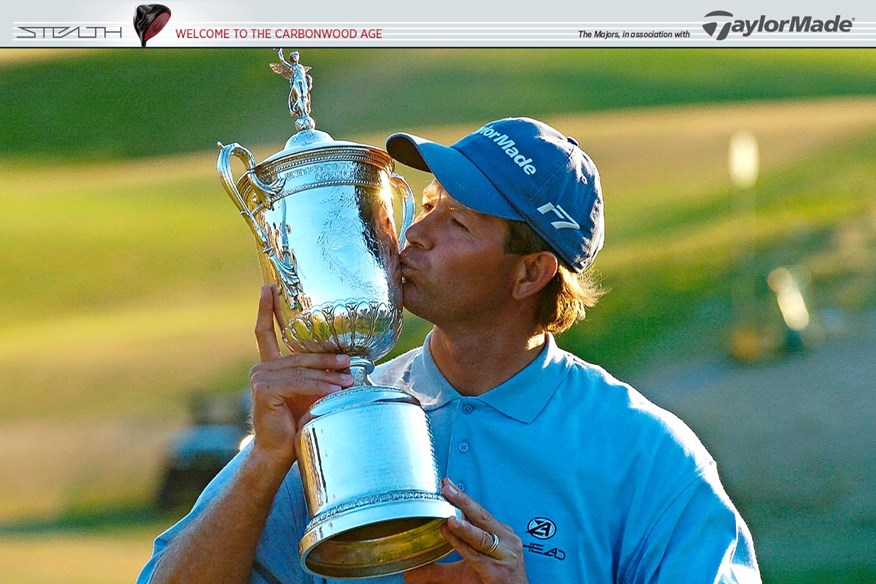Retief Goosen: “I won the US Open twice, but I should’ve won more Majors”
Last updated:
Retief Goosen won the US Open twice in a four-year spell but, as the South African explains in this reflection of his 30-year career, there should have been more Major triumphs.
In his own modest, unassuming, no-nonsense kind of way, Retief Goosen has made an impression whenever and wherever he’s played. And like his fellow countryman, the legendary South African Gary Player, he’s teed it up in an awful lot of places. All four corners of Planet Golf, in fact.
Aided by one of the silkiest and stylish swings in golf, the 53-year-old has played and won all over the globe, including nine times on both the European Tour and Sunshine Tour back home in South Africa, plus another five victories on the Asian Tour. The highlights of his career have come on the other side of the pond, however, with seven wins on the PGA Tour, including two stunning US Open victories in 2001 at Southern Hills and 2004 at Shinnecock Hills.
RELATED: Who will win the US Open?
Even the modest Goosen would admit that it’s a pretty decent return for a youngster who taught himself to play the game by studying books by Jack Nicklaus and Tom Watson, and the results were enough to earn him his 2019 induction into the World Golf Hall of Fame. It’s a return made even more impressive by the fact that Goosen was struck down by lightning mid-round in his teens – you could argue he’s a man who shouldn’t even
be here.
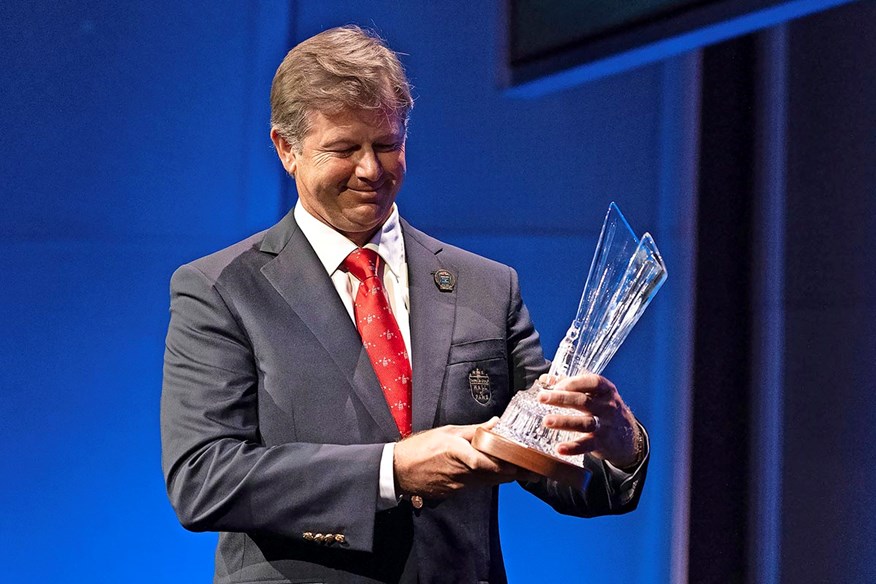
But here he most certainly is, and we caught up with him in Orlando, Florida, to recount the highs and lows of
a glittering career and a life well lived…
I was 16 when I first felt that I wanted to be a pro golfer. I loved the game and there weren’t mobile phones and all the other distractions around then. It was golf, golf, golf.
It was always going to be the thing and I was lucky because things happened early in my career. I played well, made money and started winning, and it went from there.
There was never a point when I considered doing anything else. That desire only increased after I was struck by lightning, on a golf course, just before my 16th birthday. It was one of those things. There wasn’t the weather radar and all that kind of stuff around in those days. I was on the course with my cousin, Henry, and it started raining, so we stopped playing and were hanging around a little sheltered area. When it finally stopped raining we decided to carry on. Twenty minutes later I got hit by lightning and when I woke up
I was in hospital! You don’t see or feel anything after being struck by lightning, it’s so instant and you wake
up where you wake up. Hospital, heaven or hell!
I was lucky to walk away from that. That said, after that lightning strike my golf really came alive. Maybe the lightning gave me a little spark because my golf really took off and my game went in a different direction.
The doctors told me because I had an irregular heartbeat, I needed to start exercising. So I started running, I worked out in the gym every day and I made my body stronger, and that, in turn, made my golf stronger.
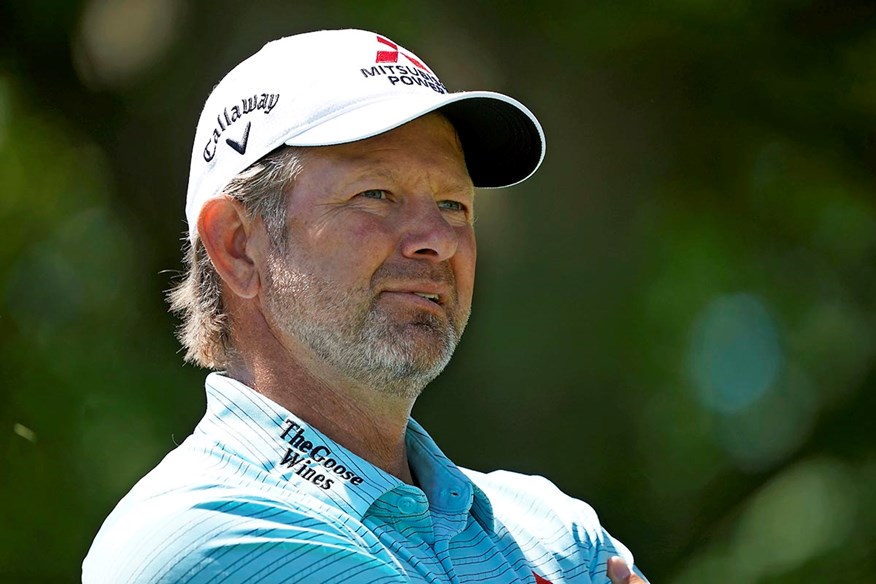
I was in hospital for about a week before they let me go home. I had a lot of burn marks on me and I couldn’t get my shoes on for nearly three weeks; my feet were really burnt. But a month later I was back down on the golf course!
The first four or five months in my two-year military service were hard, but after that things slowed down
and I managed to play some golf. I also got to know Ernie Els a bit more. I’d first met him when he was 13 and I was 14 and we both knew we were going to turn pro as soon as that military service finished.
My dad taught me a fair bit about how to play. He was a pretty good player and my two older brothers also played – so I learnt from them, too. But I would say that most of the lessons I learnt came from golf books.
I basically learnt how to grip a club, how to stand at address, and how to swing by having a tall mirror in
front of me and looking at golf books.
Jack Nicklaus’ Golf My Way was my go-to book, along with a book on the short game by Tom Watson. By following the instructions they set out, imagining in the mirror and in your mind that you’re swinging like that, that’s how I learnt. So apart from picking up tips and stuff from my dad and brothers, I was basically self taught.
RELATED: US Open field and how they qualified
Jack Nicklaus was a major influence on me later on as well. His 1986 Masters win was pretty inspirational. I was 17 at the time and, in the late 1980s, early ’90s, I closely followed the likes of Seve, Faldo, Sandy Lyle. We saw those guys on TV in South Africa, though we only saw the Majors on TV and usually that was very late at night. The British Open was probably the one I watched the most – it helped that it was pretty much on at the same time of day for us – so I managed to watch a lot of that. That’s probably why I fell in love with the Open.
I remember going to Scotland to play the St Andrews Links Trophy when I was 18. My first time at St Andrews… and I thought it was the worst golf course I’d seen in my life! I had a torrid time. I hit it in the bunkers and couldn’t get it out, and I just couldn’t spin the ball back on the massive greens. But now I would probably put St Andrews as my favourite course in the world, which just goes to show you how things change!
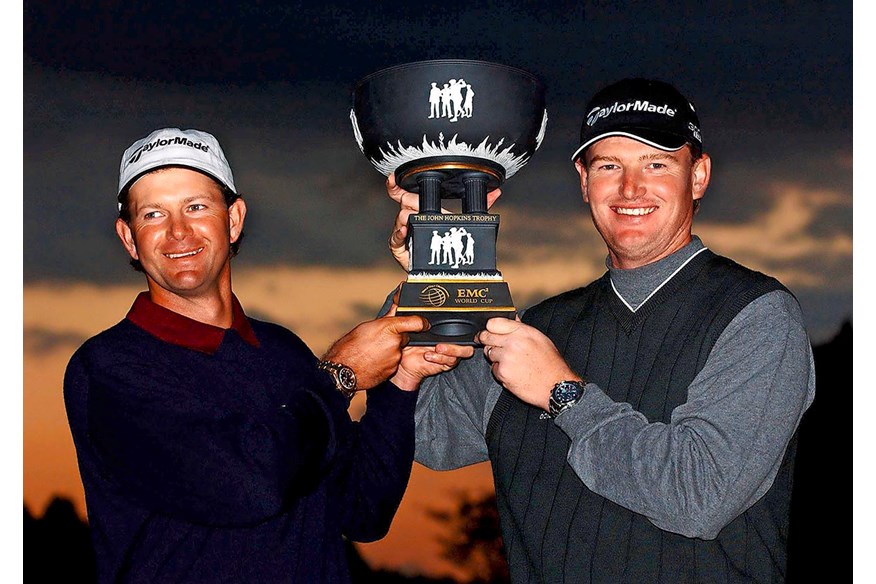
I’d first met Ernie (Els) at a junior tournament. He was 13, I was 14 and he’d just won the Junior World Championship. We played in many teams together and against each other a lot, so you could say we go back a long way. We were good friends but not best buddies. We were actually big rivals, although I played more in Europe and Ernie played more in the States.
We’ve actually become proper buddies since he’s joined the Champions Tour – we hang out as much as we can together now, have dinner together, have a laugh and a glass of wine. We’re sort of making up a bit now for lost time.
I’d say our swings are pretty similar, in terms of the rhythm. My swing has probably got a bit quicker, a bit yippier than Ernie’s. And in terms of the technical side, his is a bit better than mine, but we definitely have a similar rhythm.
Today’s players are so into video analysis and recording everything, but some players have lost their swings because they get too technical and they lose their feel. Golf is feel. Nowadays everybody wants to have one identikit golf swing and be able to swing like Rory McIlroy or whoever. In a way, they lose their feel and just become too technical. You can look at all the top players in the world through the decades, the legends of the game, and all their swings are different because they learnt how to swing and feel their swing.
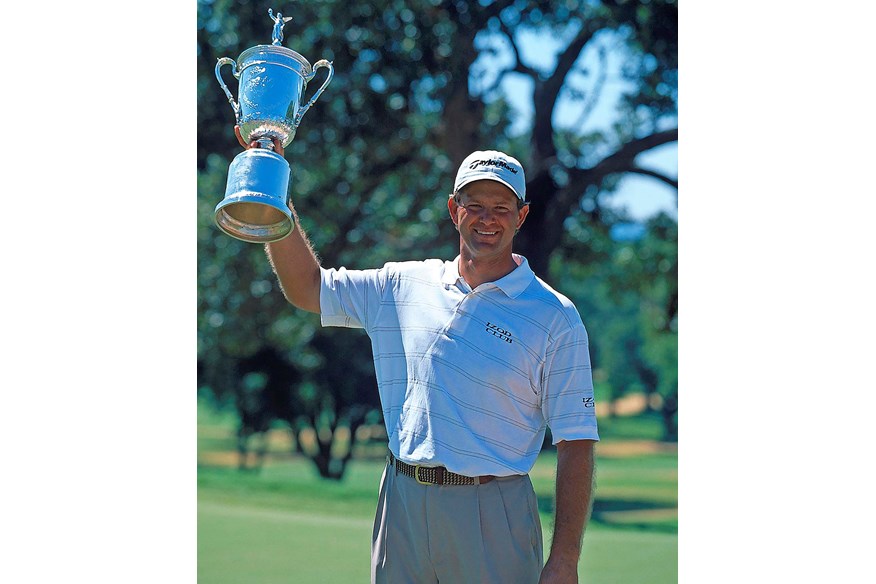
I suppose I’ve had an eventful career. Thinking back to my early days, the first junior event I won and then my first amateur success, my first South African amateur win. Then I did my two-year military service after which
I turned pro and won rookie-of-the-year in South Africa.
I started playing in Europe, won the Tour School and my first event in Europe (the Slaley Hall Northumberland Challenge in 1996), which set me on the road to winning 36 events including, most famously, my two US Opens.
At times, you think, I haven’t achieved that much in this game, but then you reflect and realise that, yeah, maybe I have done OK. I think that was reflected in being inducted into the Golf Hall of Fame in 2019, which was unbelievable and confirms that I have left my mark on this game after all.
RELATED: US Open Course Guide
Getting inducted into the Hall of Fame is my proudest moment in golf. No doubt about it. You don’t get that unless you’ve played well and done something for this game and I think that playing 38 tournaments a year around the world, in every country almost, has a lot to do with that. At the time, it was tough – playing that much golf, 30-40 weeks a year and not seeing the family. But I suppose that acknowledgement was the outcome and the reward for all that hard work.
I’d have loved to have won at Augusta or the British Open. It would have been so great going back to the Masters every year until I’m 65. Unfortunately, the US Open, although it’s the hardest Major to win, you only get a 10-year exemption and after that you’re pretty much done if you don’t continue to play well. I finished second in the Masters twice and it would have been so nice to have slipped on a Green Jacket.
I’ve had so many top-10 finishes in the British Open, too, but in truth there was never really one that I had a chance to win… I was always a little too far behind. But the Open was the one I always felt I could win because, playing in Europe for so long, I learnt how to hit the low shot. It just didn’t turn out that way, but I’ll gladly take the two US Opens. Actually, I was leading the 2005 US Open going into the final round at Pinehurst but blew that. That one really hurt. But unfortunately in golf there is only one winner and a lot of time it’s about that small word, ‘if’.
The highlight of my career? It’s easy and pretty obvious to go back to the Majors, but for me, I have to go back to winning my first big pro tourney. I’d won the Iscor Newcastle Classic on the Sunshine Tour in 1991, but it’s the Spoornet Classic at Bloemfontein that sticks in my mind. That was 1992 and I had to birdie the last hole to beat John Bland. That will always stick in my mind – the pressure you’re under, how nervous you are and the thrill of beating a top player at that time.
Not long after that I won the Mount Edgecombe Trophy, again on the Sunshine Tour, and I beat Nick Price
and Vijay Singh coming down the last. I do wonder what would have happened in terms of my mental strength and my mindset if I’d messed up over the last few holes in those two events. I guess we’ll never know.
Covid wasn’t an easy thing to deal with. Everything came to a grinding halt after the first round of the Players Championship (in March 2020). That evening, when I was asleep, I had a call in my room to say that the tournament had been cancelled. Then we heard we weren’t going to be doing anything for the next six months, pretty much, and I realised I’d need something to keep me busy. Being a bit of a mechanic – I like working on cars and stuff – I bought myself an old car (a Hummer H2) and I spent the next three months renovating it.
I never touched a golf club for those three months, they were left rusting in the garage. That was my escape from the pandemic. Luckily, the governor in Florida kept almost everything open, including the golf course and gym, so that helped massively.
With golf you’re always on the road, it never stops. So it’s great to be at home, spend time with the family and kids. I’m somebody who can’t sit still much… I love to fix things. I will repaint a room, I’ll get on the roof and clean the gutters if I have to! I’m very much a DIY man, I like doing things myself and it’s only when I can’t fix something that I’ll get someone in to do it for me. It passes time and gets your mind on other things away from golf.
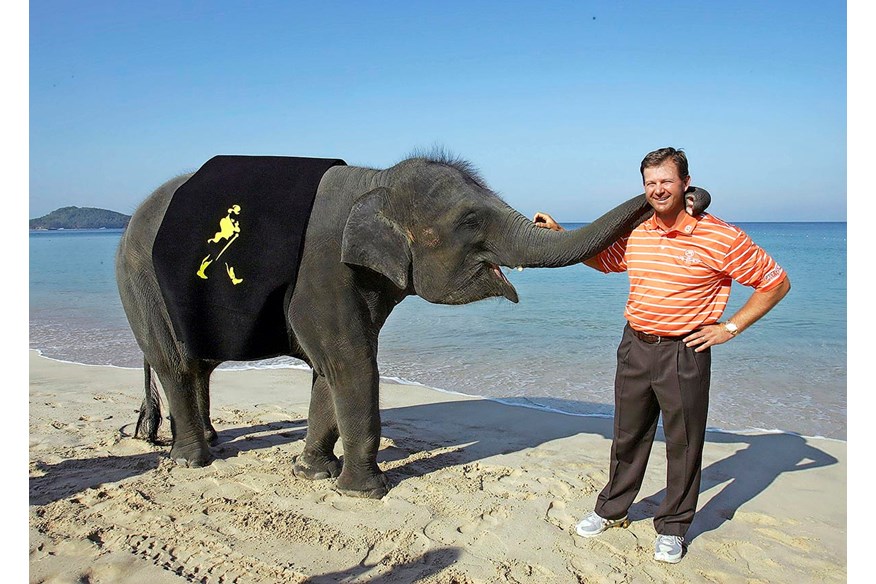
I also enjoy tinkering with cars, as I mentioned. I spent a lot of fun hours working on that Hummer during the lockdowns. It was quite an experience, stripping it down and getting into everything and repairing it myself. Once it was all finished, I felt really proud of my work.
I got Covid. The whole family got Covid. We were all pretty sick for two or three weeks. Coming back from that, I was a little weak and was shooting really bad scores… even-par while other guys were shooting 64s and 65s. I was frustrated with my game and, at times, with myself and thinking maybe I should quit. But those thoughts pass.
RELATED: How to watch the US Open
The Champions Tour is great, I’m enjoying it. I played very nicely the first year (2019) and got on a nice roll and had a chance to win a few events and the Charles Schwab Cup. It came down to the last tournament and a play-off and if I’d have won that I would have won everything, but unfortunately I lost out (to Jeff Maggert). Things started off slowly the following year when I broke my finger on the course, so I had to take a few months off to get that fixed. And then we got to the Players at TPC and, well, that was that…
The great thing about the Champions Tour is that you play a lot of old-style golf courses, the ones they used
to play the PGA Tour on but which are now too short.
So we play classic, tree-lined layouts which suit everyone’s game. Length is not really an issue and yeah,
I might be the longest, or second longest hitter on the Champions Tour, but you’ve still got to hit it straight and keep it out of the trees.
The competition is unbelievably strong. The guys still grind away on the course, the big difference now is that we enjoy a couple of beers in the evenings. A lot of guys have stayed really fit and go in the gym every day, including myself. You know that if you’re notc shooting -15-plus for three rounds, then you’re not going to be anywhere. At the start of last season, in Hawaii, I finished -19 after three rounds and still lost by two! You’ve got to go really low to win on the Champions Tour.
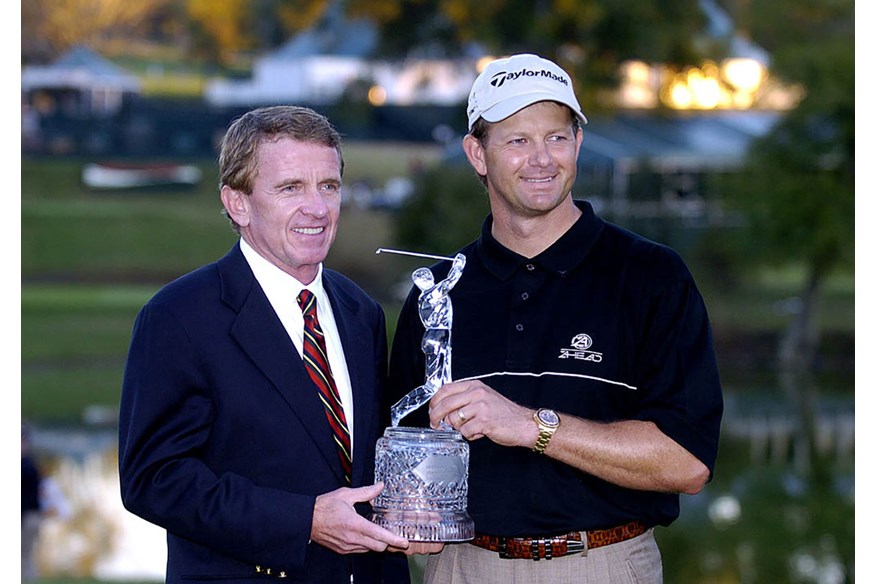
Last year was a bad year for me in terms of form and fitness. I didn’t hit it that good and I struggled with
a sore shoulder at times – I had it injected three times during the year – so it was a bit up and down. My putting wasn’t so good, I was generally a little off my game and frustration crept in, too.
At the end of the year, I finally had shoulder surgery, which is going to take me a few months to get over, so we’ll have to see how I come back from that, mentally and physically.
Injuries have been a big problem for some time now. I struggled with a bad back when I was around 38, but I managed it for a good five years with a full-time physio and exercising. After I won my last PGA Tour event when I was 40 (the Transitions Championship in 2009), my back went, and when I was about 43 I literally couldn’t get my golf shoes on and I thought my career was over. Then a friend recommended a back surgeon in Windsor and this guy said, “I can promise you 90 percent that your back is going to get better.” And here I am now, nine, 10 years after that surgery and I have zero back pain. It’s amazing.
It’s just that now everything else is falling apart! My shoulder, my neck… It’s all starting to go. Welcome to old age!
RELATED: What does the US Open Champion win?
I do feel like I should have won a few more events. Obviously, the last couple of years have been a mess with Covid, and my injuries haven’t helped, but I hope to get my mindset to a place where I have the willpower to fight hard and win a few more times. In this game you’ve got to fight every day and not get down when things don’t go as you planned.
My goal is to hopefully up my game in the next few years, win events and at least perform better and have a chance to win every week, or at least be in the top 10. I feel I’m good enough to do that. If I’m finishing, say, 50th each week, it’s like, what am I doing out here?
I’ve been out here more than 30 years as a pro and I do sometimes wonder if it’s time to call it a day. I’ve done OK, I don’t really need the money. But on the inside you keep going back for more punishment because you know you want to play well and you want to be up there on the leaderboard. But I’ll know when it’s time. When the willpower goes, I’ll call it quits.
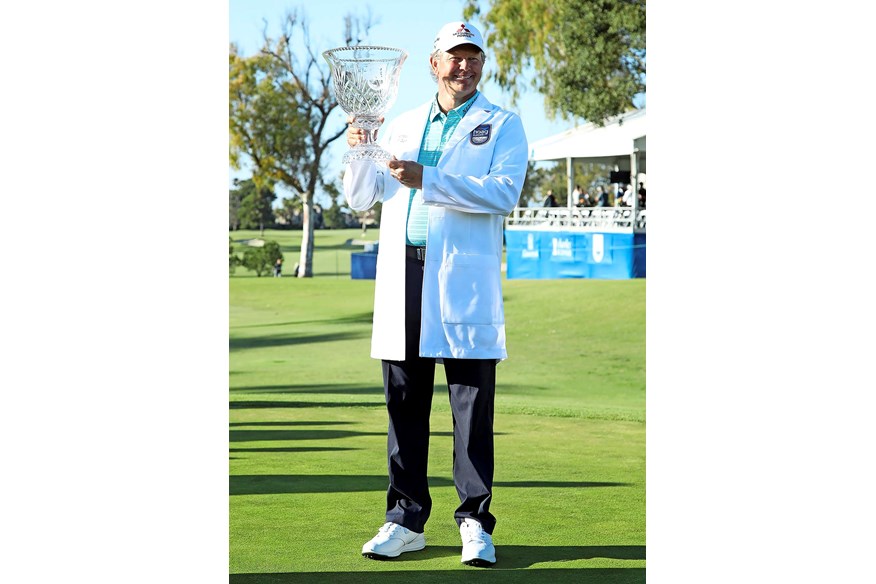
Retief Goosen’s Career Highlights
Turned pro in 1990 aged 21 after claiming 30 amateur wins.
Wins seven times on the PGA Tour, 14 on the European Tour, five on the Asian Tour and nine on the Sunshine Tour.
Wins six PGA Tour events between June 2001 and August 2005.
Named European Tour Player of the Year in 2001 and wins the ET Order of Merit in 2001 & ’02.
Final PGA Tour win comes at the 2009 Transitions Championship.
Two Major wins, both at the US Open – 2001 at Southern Hills and 2004 at Shinnecock Hills.
Records top 10s in all four Majors, including a runner-up and T2 finish at the Masters in 2002 and 2007, and a T5 finish at the 2005 and 2009 Opens.
Inducted into the World Golf Hall of Fame in 2019.
Wins his first Champions Tour Major, the Bridgestone Senior Players Championship (2019), and named Champions Tour Rookie of the Year and lifts the Byron Nelson Award for lowest scoring average.
Wins his second Champions Tour title at the Hoag Classic in March.
READ NEXT: US Open tee times and groups
-
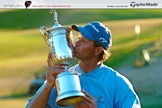 Retief Goosen is a two-time US Open winner.
Retief Goosen is a two-time US Open winner.
-
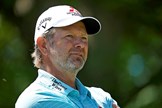 Retief Goosen plays on the Champions Tour.
Retief Goosen plays on the Champions Tour.
-
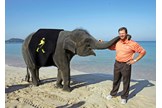 Chilling with Yum Yum the elephant at the launch of the 2007 Johnnie Walker Classic in Phuket, Thailand.
Chilling with Yum Yum the elephant at the launch of the 2007 Johnnie Walker Classic in Phuket, Thailand.
-
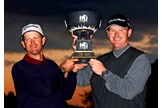 Goosen and Els have been friends for 40 years, but only recently became big buddies.
Goosen and Els have been friends for 40 years, but only recently became big buddies.
-
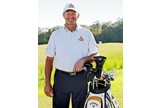
-
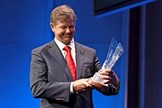 Goosen is inducted into the World Golf Hall of Fame in 2019 – his proudest moment in the game.
Goosen is inducted into the World Golf Hall of Fame in 2019 – his proudest moment in the game.
-
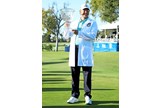 Still winning into the autumn of his career, this time the Hoag Classic on the PGA Champions Tour in March this year.
Still winning into the autumn of his career, this time the Hoag Classic on the PGA Champions Tour in March this year.
-
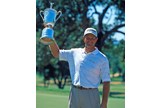 Goosen’s maiden Major came with play-off defeat of Mark Brooks in the 2001 US Open at Southern Hills.
Goosen’s maiden Major came with play-off defeat of Mark Brooks in the 2001 US Open at Southern Hills.
-
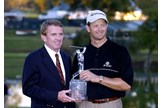 Goosen won the Tour Championship at East Lake in 2004.
Goosen won the Tour Championship at East Lake in 2004.
